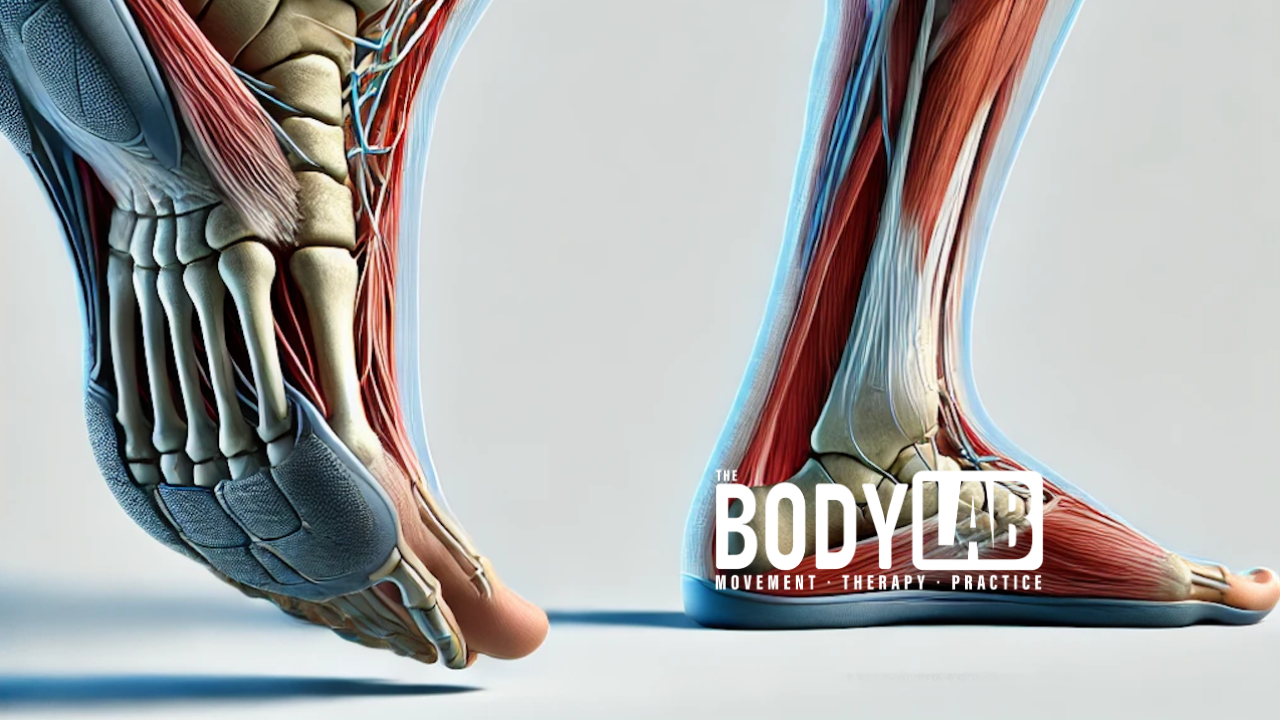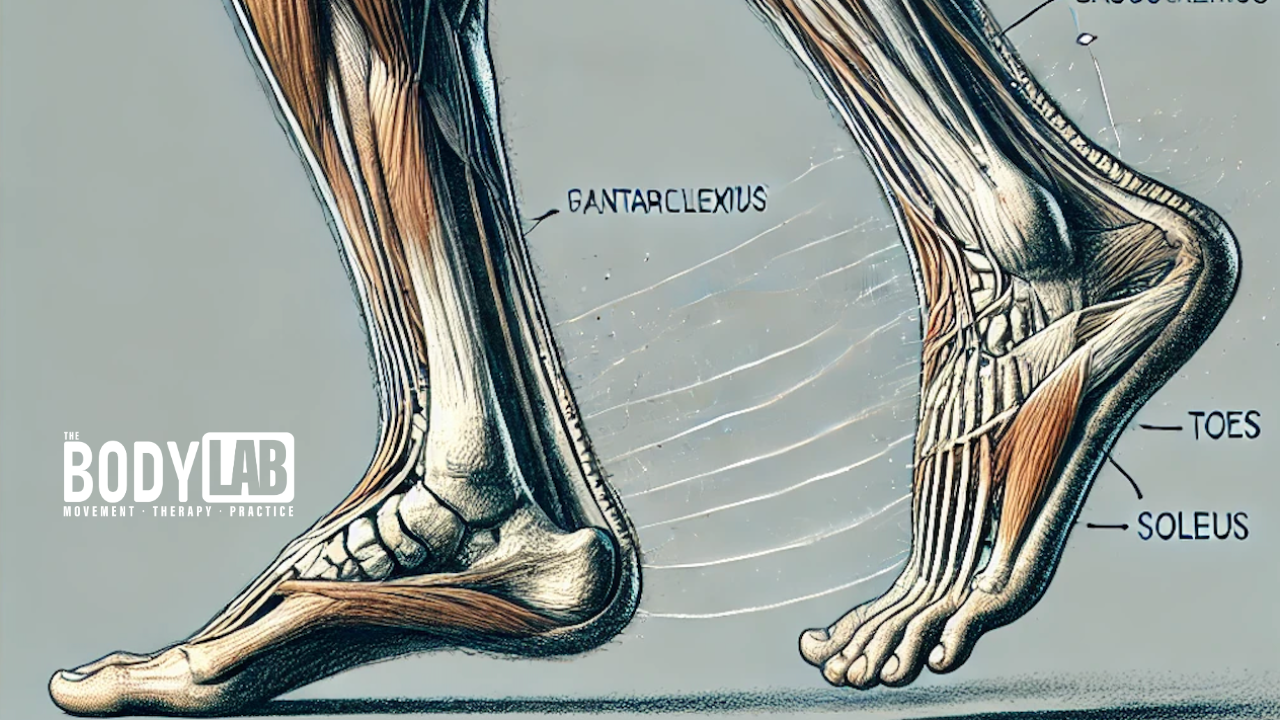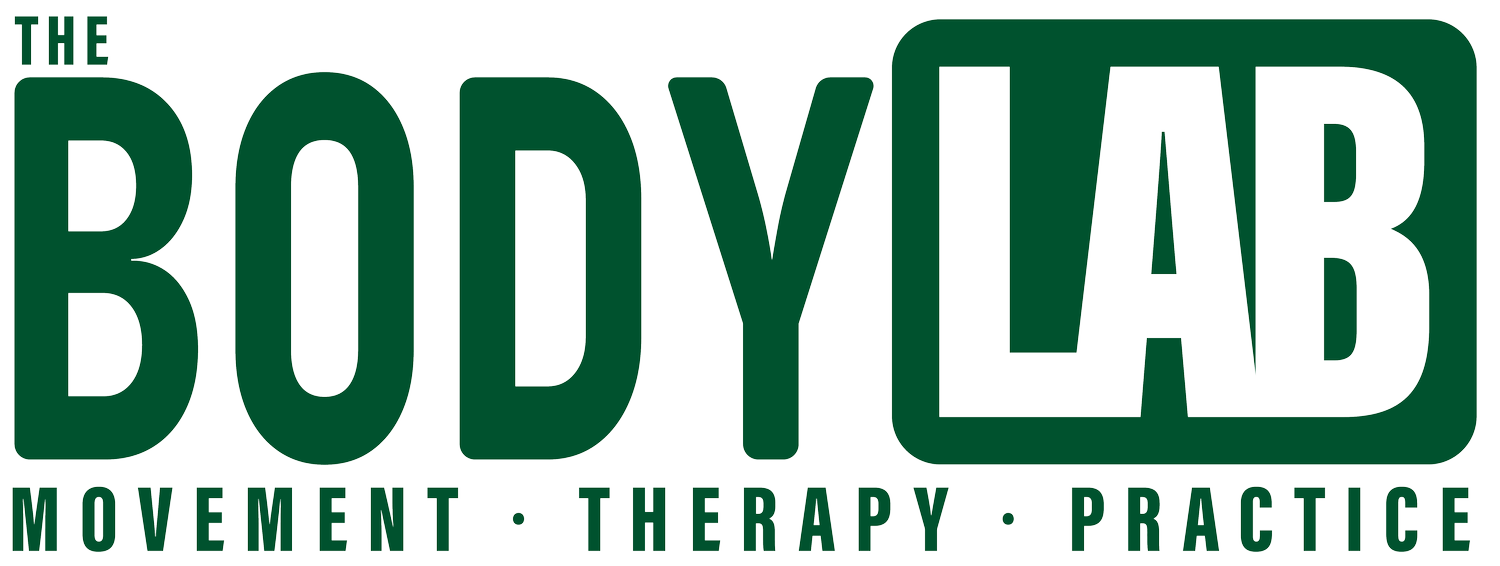
Toe-Off Phase of Gait: Joint Mechanics and Clinical Relevance
Toe-Off Phase of Gait
The human gait cycle is a complex and well-coordinated biomechanical process, involving multiple muscle groups, joints, and neural pathways working together to produce forward movement. One of the most critical moments within this cycle is the toe-off phase, which marks the transition between the stance and swing phases. The toe-off phase, also referred to as the pre-swing or propulsion phase, represents the moment when the body pushes off the ground using the toes, initiating the swing phase where the foot is lifted and moves forward. Proper execution of the toe-off phase is essential for efficient locomotion, as it plays a key role in propulsion and maintaining gait stability. Disruptions in this phase, such as improper supination or muscle imbalances, can result in movement dysfunctions, increasing the risk of injury.
I will delve into the detailed joint mechanics of the lower limb during the toe-off phase, exploring movements in all three planes of motion—sagittal, frontal, and transverse. The role of specific muscles, including the importance of the Windlass Mechanism, will be discussed. Additionally, we will explore the clinical relevance of abnormalities during this phase, referencing common conditions such as plantar fasciitis, Achilles tendinopathy, and overpronation.

Toe-Off Phase Overview
The toe-off phase occurs at the very end of the stance phase of the gait cycle, representing a transition from stance to swing. This phase, also referred to as pre-swing or propulsion, involves the full plantar flexion of the ankle, dorsiflexion of the rear-foot and digits (toes) and plantar flexion of the forefoot, and the engagement of the Windlass Mechanism, which elevates the all the arches of the foot. The Windlass Mechanism, named by Hicks in 1954, tightens the plantar fascia through dorsiflexion of the metatarsophalangeal (MTP) joints, transforming the foot into a rigid lever. This is crucial for efficient propulsion during walking and running (Bolivar et al., 2013).
Foot and Ankle Mechanics
Sagittal Plane:
In the sagittal plane, the ankle moves from dorsiflexion in loading phase to plantarflexion as the heel rises off the ground. This transition is driven by the concentric contraction of the gastrocnemius and soleus muscles, which generate the force necessary to propel the body forward (Kim et al., 2011). During toe-off, the metatarsophalangeal (MTP) joints undergo plantar flexion as the rear-foot dorsiflexes, which, in turn, activates the Windlass Mechanism (Bolivar et al., 2013). The tightening of the plantar fascia elevates the medial arch and transforms the foot into a rigid structure for efficient push-off.
Frontal Plane:
In the frontal plane, the foot undergoes a shift from a pronated position during midstance into supinated during toe-off. This transition is aided by the subtalar joint, which moves into inversion. Supination elevates the medial arch, ensuring that the foot becomes a stable lever capable of handling the forces generated during propulsion (Whittle, 2014). The tibialis posterior muscle plays a crucial role in preventing overpronation and facilitating a smooth transition into supination.
Transverse Plane:
In the transverse plane, the rear foot undergoes external rotation during toe-off. This movement helps align the forefoot and rearfoot for efficient propulsion. The coordinated actions of rear foot external rotation, internal rotation of the forefoot and supination are essential for the effective engagement of the Windlass Mechanism, ensuring that the body moves forward efficiently while minimizing energy expenditure (Perry, 1992).
Talocrural (ankle) Joint Mechanics
Talocrural joint motion is defined as the motion of the talus relative to the tibia
The talocrural (ankle) joint moves from plantar flexed into a dorsiflexed during toe-off. This movement is driven by the gastrocnemius and soleus muscles, which contract concentrically to push the foot off the ground. The talocrural joint acts as a hinge, allowing for efficient transfer of force through the leg during propulsion (Perry, 1992). If dorsiflexion is impaired, as in the case of Achilles tendinopathy, propulsion is significantly affected, leading to inefficiencies in the gait cycle.
Sagittal Plane:
During toe-off, the talocrural joint (ankle joint) moves from dorsiflexion into plantarflexion. This transition is essential for generating the force needed for forward propulsion also knee extension, hip extension and posterior tilt of the pelvis.
Frontal Plane:
Minimal movement occurs in the frontal plane at the talocrural joint during toe-off. However, slight inversion may occur as the foot moves toward supination via the subtalor joint, particularly as the foot begins to push off in preparation for the swing phase. This inversion is primarily managed by the tibialis posterior and the peroneal muscles again via the subtalor joint.
Transverse Plane:
In the transverse plane, the talocrural joint experiences some degree of external rotation during toe-off from the motion of the subtalar joint. This motion is critical in aligning the foot for efficient propulsion. The external rotation occurs in response to the shifting forces during gait, allowing the foot to transition smoothly into supination.
Subtalar Joint (rear-foot) Mechanics
Subtalar joint motion is defined as motion of the calcaneus relative to the talus
The subtalar joint moves from a pronated position during midstance transitioning into supination during toe-off. Supination stiffens the foot and elevates the arches of the foot, creating the necessary rigidity for efficient push-off. The subtalar joint’s ability to control this inversion is crucial for proper force distribution and reducing the risk of overpronation (Whittle, 2014).
Sagittal Plane:
In the sagittal plane, the subtalar joint dorsiflexes from loading phase into a plantar flexed position into supination at toe-off.
Frontal Plane:
The subtalar joint experiences inversion during toe-off, which contributes to the transition from pronation an eversion motion to supination an inversion motion. This inversion increases the all the arches of the foot but the medial arch height of the foot is most visible, making the foot more rigid and allowing for effective push-off. The tibialis posterior plays a vital role in controlling this inversion.
Transverse Plane:
In the transverse plane, the subtalar joint undergoes external rotation from an internal rotation as loading phase, in tandem with the foot’s movement toward supination. This external rotation ensures proper alignment and force distribution across the rearfoot as the body moves forward. This alignment is critical for energy-efficient propulsion and avoiding injury.
Rear Foot Mechanics
Sagittal Plane (DF)
The rear foot moves into dorsiflexion as the ankle joint plantar flexes during toe-off. This dorsiflexion is crucial for moving the foot away from the ground and propelling the body into the swing phase.
Frontal Plane (INV)
The rearfoot undergoes inversion, transitioning from the everted pronated position of midstance to a supinated inverted position. This shift creates the necessary rigidity in the foot for an effective push-off, preventing excessive lateral movement.
Transverse Plane (ER)
As with the subtalar joint, the rearfoot externally rotates in the transverse plane. This external rotation aligns with the supination process, further stabilizing the foot and optimizing force distribution during the toe-off phase.
Forefoot and Digit Mechanics
Sagittal Plane (PL)
The forefoot plantar flex significantly during toe-off. The digits, follow the rear foot, undergo dorsiflexion as the Windlass Mechanism activates. The plantar fascia tightens as the MTP joints dorsiflex, elevating the arch of the foot and transforming the forefoot into a rigid lever.
Frontal Plane (EV)
The forefoot also moves into eversion to a supinated during toe-off to keep the forefoot in contact with the ground. This motion is necessary opposing action to maintain the forefoot contact with the ground.
Transverse Plane (IR)
In the transverse plane, the forefoot internally rotates opposing the rearfoot, ensuring proper alignment for the propulsion phase. This internal rotation is subtle but important for ensuring that the foot remains in contact with the ground and remains stable during push-off.

Knee Joint Mechanic
During the toe-off phase, the knee joint moves from flexion into extension. The quadriceps muscles, primarily the rectus femoris, contract concentrically to extend the knee, stabilising the leg for efficient propulsion (Perry, 1992). As the leg prepares for toe-off, the knee extends fully, aligning with the plantarflexion of the ankle to maximise force transfer through the lower limb. The hamstrings, specifically the biceps femoris, play a role in decelerating knee extension, ensuring controlled movement. Any dysfunction in knee extension, such as quadriceps weakness, can disrupt this phase, reducing propulsion efficiency and potentially leading to compensatory movements higher up the kinetic chain (Whittle, 2014).
Sagittal Plane (EX)
The knee is in maximum extension in toe-off phase of gait. Loading phase is maximum flexion to the transition into extension during toe-off. Inability to full flex the knee will hamper the ability to maximally extend the knee affecting hip extension, pelvis tilt and lumbar spine motion.
Transverse Plane (IR)
In the transverse plane, the knee internally rotates if you consider the femur rotates more than the tibia and thus creating a relative internal rotation. Granted both the femur and tiba are rotating externally but the speed of the femur and convex nature of the tibia allows the femur to rotate more.
Hip Joint Mechanics
In the hip joint, extension is the key motion during toe-off. The gluteus maximus and hamstrings (semimembranosus and semitendinosus) contract to extend the hip, driving the body forward and aiding in propulsion (Perry, 1992). As the foot pushes off, the hip extends to its maximum range in the sagittal plane, providing the necessary thrust for the leg to move into the swing phase. Any restrictions in hip extension, such as tightness in the hip flexors or weakness in the gluteals, can impair propulsion and cause inefficiencies in the gait cycle. Additionally, proper hip extension is essential for maintaining pelvic stability and ensuring smooth transitions between the stance and swing phases (Whittle, 2014).
Hip Joint Mechanics
In the hip joint, extension is the key motion during toe-off. The gluteus maximus and hamstrings (semimembranosus and semitendinosus) contract to extend the hip, driving the body forward and aiding in propulsion (Perry, 1992). As the foot pushes off, the hip extends to its maximum range in the sagittal plane, providing the necessary thrust for the leg to move into the swing phase. Any restrictions in hip extension, such as tightness in the hip flexors or weakness in the gluteals, can impair propulsion and cause inefficiencies in the gait cycle. Additionally, proper hip extension is essential for maintaining pelvic stability and ensuring smooth transitions between the stance and swing phases (Whittle, 2014).
Sagittal Plane (EX)
The hip moves into extension during toe-off. The gluteus maximus and hamstrings contract concentrically to drive this extension, which helps propel the body forward. Hip extension is critical for maintaining forward momentum and transitioning into the swing phase.
Frontal Plane (ADD)
In the frontal plane, the hip undergoes slight adduction as the body’s weight shifts over the stance leg. This movement is necessary for maintaining balance and ensuring proper alignment of the pelvis during propulsion.
Transverse Plane (ER)
In the transverse plane, the hip externally rotates during toe-off. This external rotation aligns the lower limb with the movement of the foot, ensuring efficient propulsion and rotation mechanics at the knee.
Pelvic Mechanics
Sagittal Plane (ANT)
The pelvis remains in a slightly posteriorly tilted position during toe-off, accommodating the extension of the hip and allowing for an efficient transition into the swing phase.
Frontal Plane (DTILT)
In the frontal plane, the pelvis experiences a downwards or contralateral drop as the swing leg begins to move forward. This drop is controlled by the gluteus medius on the stance side, which helps maintain pelvic stability.
Transverse Plane (TBL)
The pelvis rotates slightly towards the back leg (TBL) during toe-off. This rotation is critical for maintaining forward momentum and preparing the body for the swing phase.
Functional Movement and the Role of Musculature
Muscles of the Lower Leg
The toe-off phase is heavily reliant on the coordinated actions of multiple muscle groups. The gastrocnemius and soleus muscles are the primary drivers of plantarflexion at the ankle, generating the force necessary for forward propulsion. These muscles work alongside the tibialis posterior, which controls the transition from pronation to supination and stabilizes the arch of the foot.
At the knee, the quadriceps and hamstrings work together to maintain stability. The gluteus maximus and hamstrings generate hip extension, helping the body transition into the swing phase. Additionally, the gluteus medius is critical for maintaining pelvic stability, ensuring that the body remains aligned during propulsion.
Clinical Relevance of Toe-Off
Dysfunction during the toe-off phase can lead to a variety of movement inefficiencies and an increased risk of injury. Common clinical issues related to this phase include:
• Plantar Fasciitis: If the Windlass Mechanism does not engage properly during toe-off, the plantar fascia may become unable to shorten or contract and become overloaded in a long elongated position, and may leading to plantar fasciitis. In this condition, the plantar fascia is unable to support the medial arch or all the arches adequately, leading to pain and inflammation (Bolivar et al., 2013).
• Achilles Tendinopathy: Excessive loading of the Achilles tendon during toe-off can exacerbate symptoms of Achilles tendinopathy. This condition often occurs when plantarflexion is not properly controlled, leading to excessive strain on the tendon (Maffulli et al., 2015).
• Overpronation: Individuals with flat feet or excessive pronation may struggle to achieve proper supination during toe-off, leading to inefficient propulsion and an increased risk of injury further up the kinetic chain. Overpronation during toe-off can result in excessive strain on the knee and hip joints, contributing to conditions such as patellofemoral pain syndrome and iliotibial band syndrome (Whittle, 2014).
Dr. Andry Vleeming and Movement Subsystems
Dr. Andry Vleeming and his research team have made significant contributions to understanding the movement subsystems that influence pelvic and lower limb function during gait. According to Vleeming et al. (2007), the pelvis acts as a crucial control center for lower limb movement, particularly during the toe-off phase. The coordinated actions of the pelvic girdle, hip, and lower limb are essential for ensuring effective propulsion and preventing movement dysfunctions.
Vleeming’s research highlights the importance of the lumbopelvic subsystem in controlling the transfer of forces during gait. Dysfunction in this subsystem can lead to compensatory movements in the lower limb, affecting the efficiency of the toe-off phase and increasing the risk of overuse injuries (Vleeming et al., 2007). Clinicians should be aware of the interconnected nature of the musculoskeletal system, as dysfunction in one area (e.g., the pelvis) can lead to issues further down the kinetic chain, particularly during critical phases like toe-off.
The toe-off phase of gait is a critical component of efficient human movement. Proper joint mechanics, including ankle plantarflexion, subtalar joint supination, and MTP joint dorsiflexion, are essential for generating the force necessary for forward propulsion. The Windlass Mechanism plays a key role in transforming the foot into a rigid lever, allowing for efficient energy transfer during push-off.
Clinicians and movement specialists must pay close attention to the toe-off phase when assessing gait abnormalities. Dysfunction in this phase, such as improper supination or excessive loading of the Achilles tendon, can lead to a range of movement inefficiencies and injuries
References:
1. Bolivar, Y.A., Munuera, P.V., Padillo, J.P., et al. (2013). The Windlass Mechanism in individuals with plantar fasciitis: a biomechanical analysis. Foot and Ankle International, 34(9), pp. 1256-1262.
2. Kim, H.J., Lee, Y.S., Kim, T.H., et al. (2011). Plantar Pressure Analysis in Gait. Journal of Biomechanics, 44(3), pp. 15-21.
3. Maffulli, N., Longo, U.G., Denaro, V. (2015). Achilles Tendinopathy and Activity Levels in Sports. Clinical Sports Medicine, 24(2), pp. 258-266.
4. Perry, J. (1992). Gait Analysis: Normal and Pathological Function. SLACK Inc.
5. Whittle, M.W. (2014). Gait Analysis: An Introduction. Elsevier Health Sciences..
